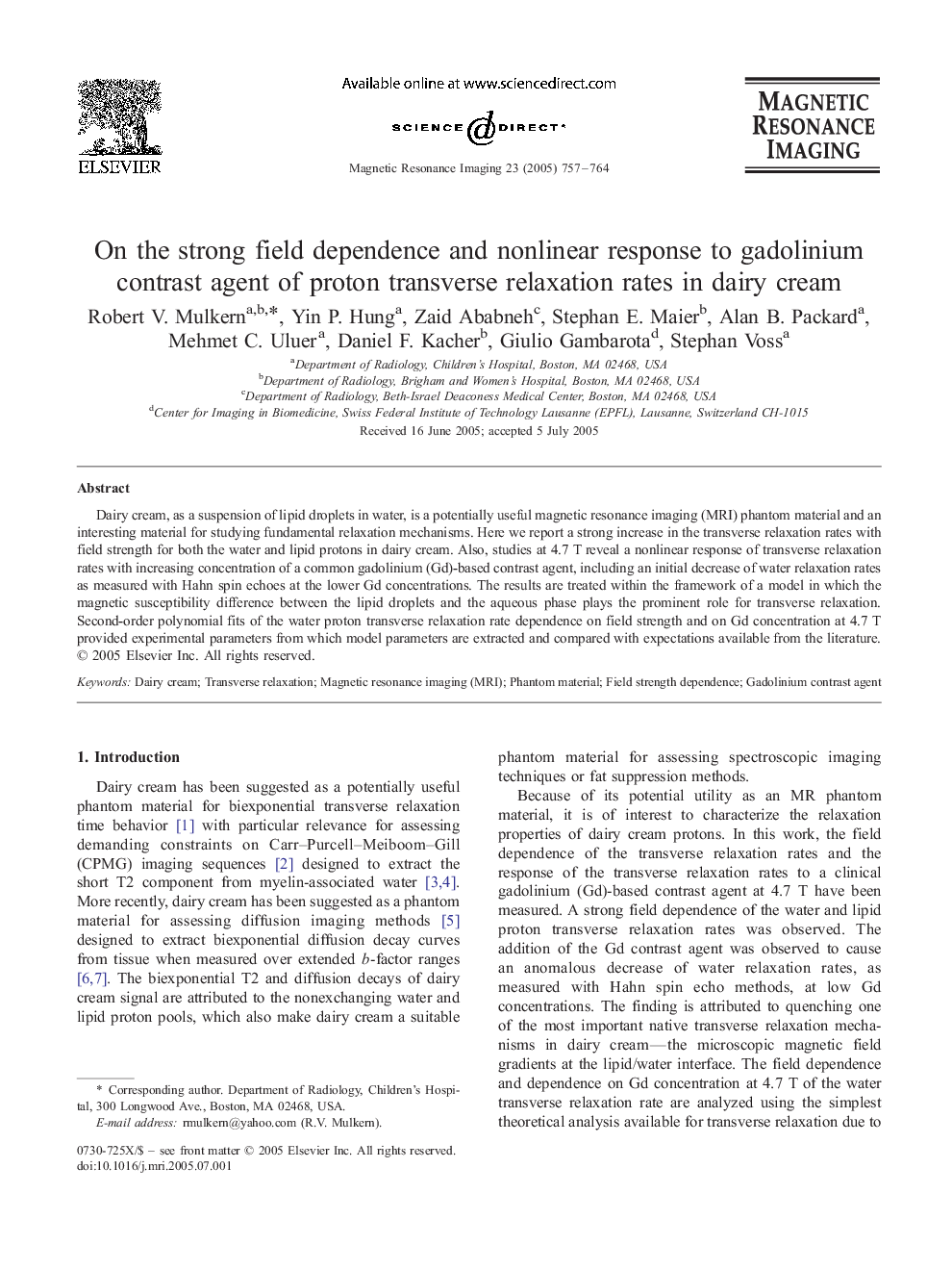| Article ID | Journal | Published Year | Pages | File Type |
|---|---|---|---|---|
| 10712868 | Magnetic Resonance Imaging | 2005 | 8 Pages |
Abstract
Dairy cream, as a suspension of lipid droplets in water, is a potentially useful magnetic resonance imaging (MRI) phantom material and an interesting material for studying fundamental relaxation mechanisms. Here we report a strong increase in the transverse relaxation rates with field strength for both the water and lipid protons in dairy cream. Also, studies at 4.7 T reveal a nonlinear response of transverse relaxation rates with increasing concentration of a common gadolinium (Gd)-based contrast agent, including an initial decrease of water relaxation rates as measured with Hahn spin echoes at the lower Gd concentrations. The results are treated within the framework of a model in which the magnetic susceptibility difference between the lipid droplets and the aqueous phase plays the prominent role for transverse relaxation. Second-order polynomial fits of the water proton transverse relaxation rate dependence on field strength and on Gd concentration at 4.7 T provided experimental parameters from which model parameters are extracted and compared with expectations available from the literature.
Related Topics
Physical Sciences and Engineering
Physics and Astronomy
Condensed Matter Physics
Authors
Robert V. Mulkern, Yin P. Hung, Zaid Ababneh, Stephan E. Maier, Alan B. Packard, Mehmet C. Uluer, Daniel F. Kacher, Giulio Gambarota, Stephan Voss,
